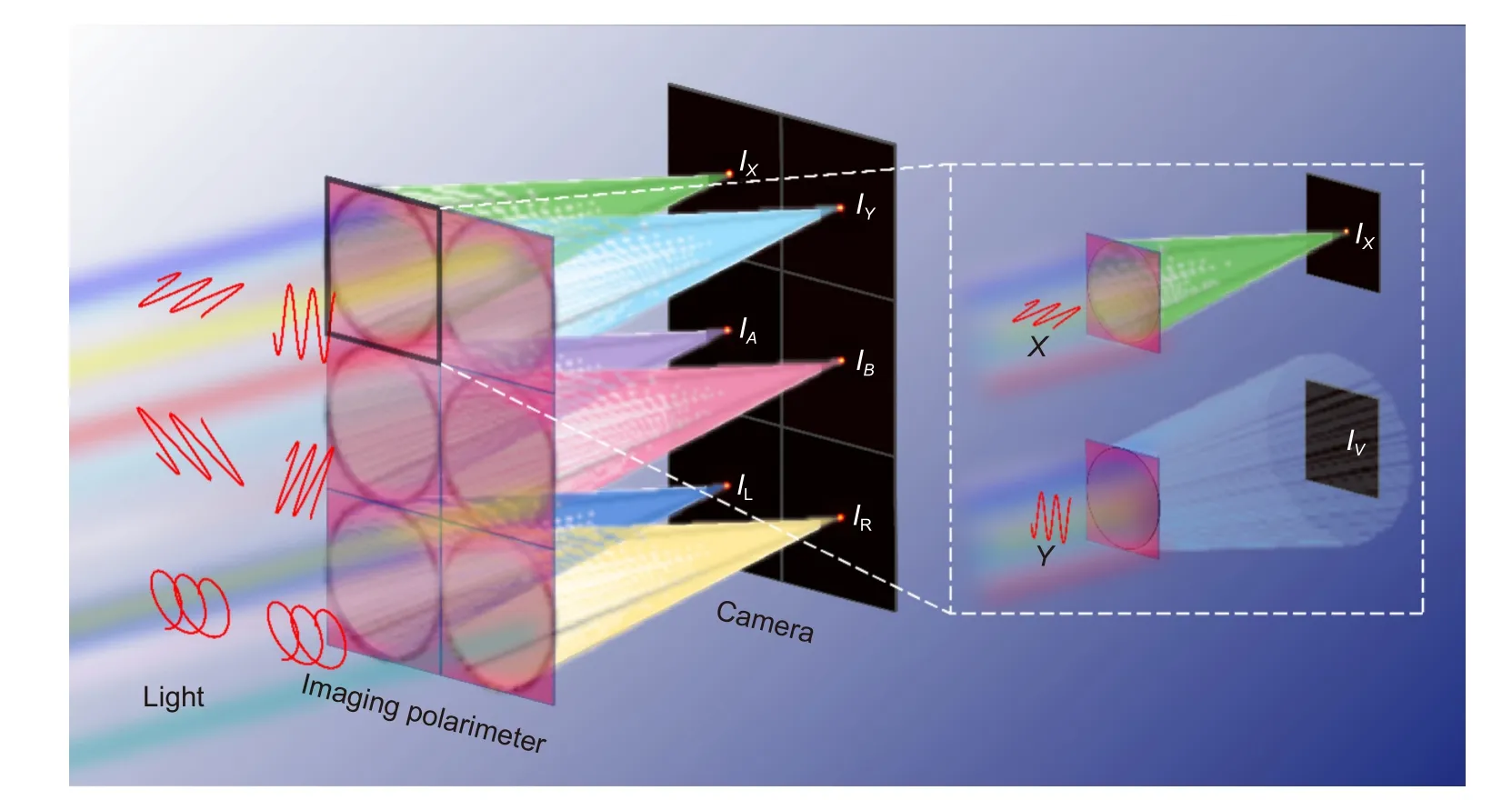A novel method for designing crosstalk-free achromatic full Stokes imaging polarimeter
Jinghua Teng
Polarization comprises abundant information of substance, playing an essential role in light-matter interactions. Polarimetry, a method of determining the polarization states of the scene, has been widely adopted in remote sensing1, biomedicine2, astronomy3, etc. Conventional methods for polarimetry demand beam splitters,waveplates, and polarizers for measuring Stoke parameters in one shot, which ineluctably limiting their applications in compact and integrated optical systems.
Metasurface has made numerous impressive applications in imaging4,5, holography6,7, catenary optics8,9, extraordinary Young’s interference (EYI)10, and other areas for its flexible optical field modulation and potentials in highly compact integration due to ultra-thin nature11-14.It also provides new routes for polarimetry. To date,various metasurface-based dielectric polarimeters have been developed, such as spectropolarimeters15, snapshot imaging polarimetry16, Hartmann-Shack wavefront sensor17, and wide-angle polarimetry18. Although the performance of polarimeters has made considerable headway, these polarimeters operate at a single wavelength and have not taken into account the effects of polarization crosstalk.
Albeit some works attempted to extend the bandwidth of the polarimeter by using metagrating15,19, thee polarimeters implement broadband dispersion rather than achieving achromatic broadband, constraining the practical applications to a certain extent. Besides, tackling crosstalk between polarizations is often lacking,leading to significant errors in measurements. The approach of employing calibration matrix to correct the measurement error proves inadequate for accurately measuring unknown wavelengths in broadband17,20. Thus far, characteristics of broadband achromatic and crosstalk-free is still an unreachable feature for metasurface-based polarimetry techniques.
In a recent paper published onOpto-Electronic Advances18, Xiangang Luo and his colleagues propose a method for the crosstalk-free achromatic full Stokes imaging polarimeter. The proposed broadband achromatic polarimeter is designed to effectively separate arbitrary incident light within the operational bandwidth into different polarization channels, focusing them on a predefined focal plane, as illustrated in Fig. 1. The schematic within the white frame on the right depicts the underlying principle of polarization-dependent phase optimization, which mitigates crosstalk effects and enhances the accuracy of polarimetry measurements.

Fig. 1 | The schematic of crosstalk-free achromatic full Stokes imaging polarimetry metasurface enabled by polarization-dependent phase optimization. Figure reproduced with permission from ref.21, under a Creative Commons Attribution 4.0 International License.
To execute the proposed methodology, a crosstalk-free broadband achromatic full Stokes imaging polarimeter based on dielectric metasurface is produced, which operates in wavelength range from 9 μm to 12 μm with a relative bandwidth of 0.2857. The polarimeter consists of 2×3 polarization-sensitive dielectric metalenses, elaborately designed by the particle swarm optimization (PSO)algorithm and polarization-dependent phase optimization method. The performances of the achromatic metalenses for linear (X,Y) and circular (L, R) polarizations are first verified. Both numerical simulations and experimental results demonstrate that these metalenses accomplish crosstalk-free polarization-sensitive achromatic focusing within the designated bandwidth.Moreover, the performance of the polarimeter is validated by illuminating various polarization states under 9.3 μm, 9.6 μm, 10.3 μm, and 10.6 μm wavelength. The polarimeter can directly and accurately measure without calibration at each wavelength, which is of great significance to the practicality of the device, because various influencing factors are considered in the early elaborate design. Finally, the polarization imaging performance is evidenced by utilizing a self-built polarization mask that carries polarization information.
This work envisions the powerful roles of the proposed design methodology. The experimental results affirm that the designed polarization-sensitive metalenses effectively eliminate the chromatic aberration while exhibiting polarization selectivity and negligible crosstalk.Compared with the single-polarization optimization method, the average crosstalk has been reduced by more than three times for incident light with arbitrary polarization in a wavelength range from 9 μm to 12 μm, guaranteeing a more accurate measurement of the polarization state. This work could impact applications in wavefront detection, remote sensing, color imaging, and light-field imaging.
 Opto-Electronic Advances2023年8期
Opto-Electronic Advances2023年8期
- Opto-Electronic Advances的其它文章
- Cover
- Advancing nonlinear nanophotonics: harnessing membrane metasurfaces for third-harmonic generation and imaging
- Time-sequential color code division multiplexing holographic display with metasurface
- Third-harmonic generation and imaging with resonant Si membrane metasurface
- Direct field-to-pattern monolithic design of holographic metasurface via residual encoderdecoder convolutional neural network
- Planar peristrophic multiplexing metasurfaces
